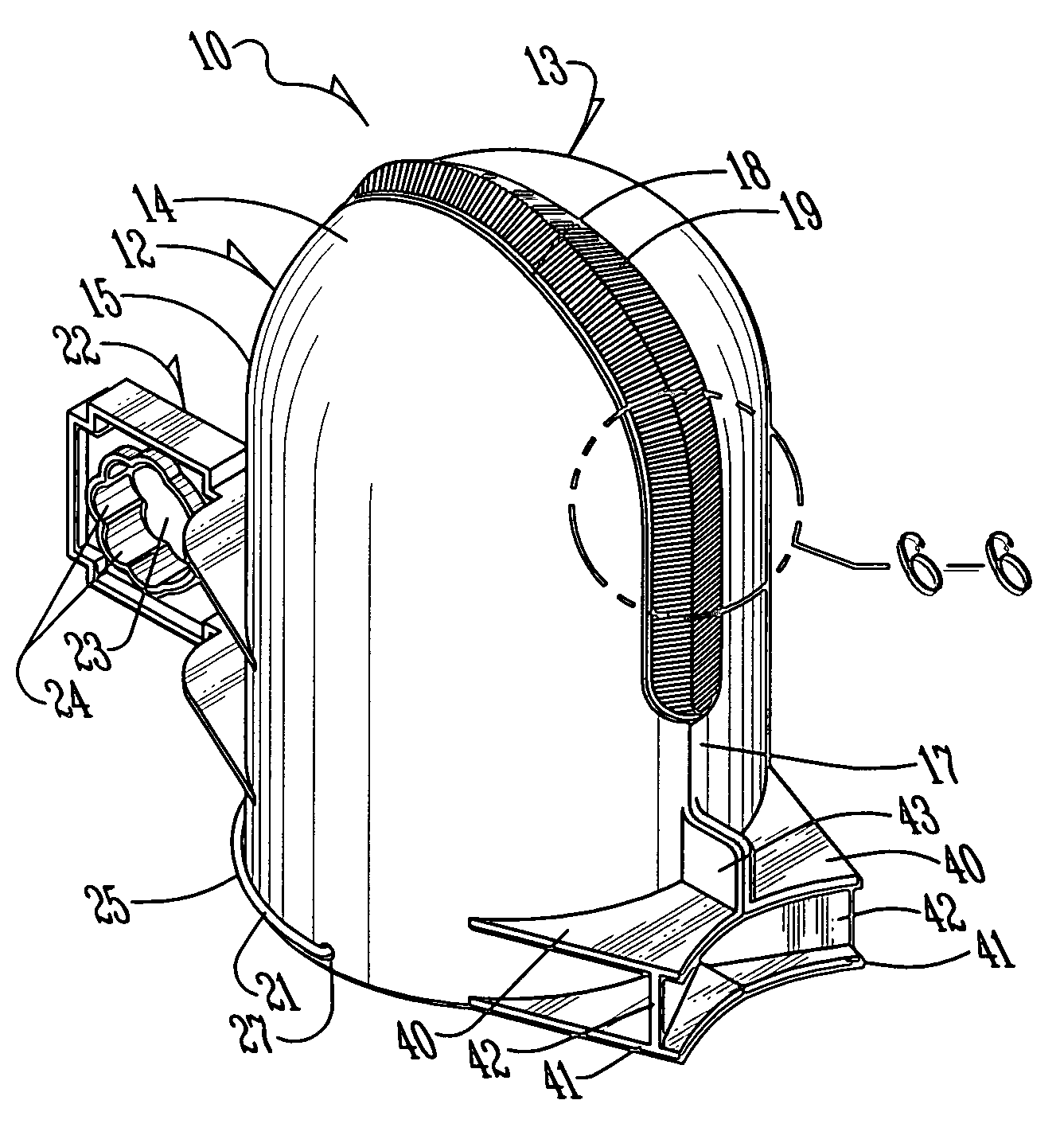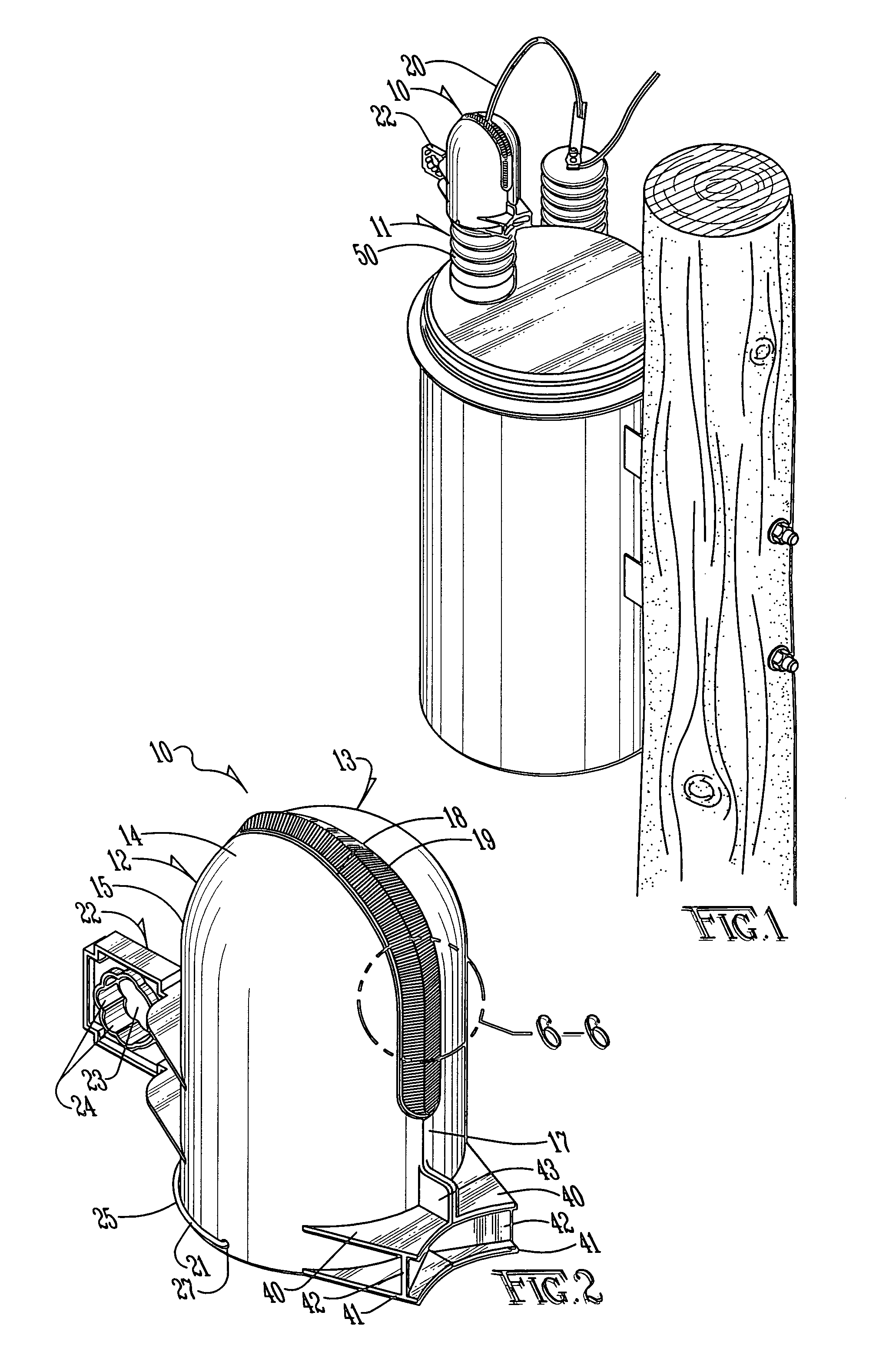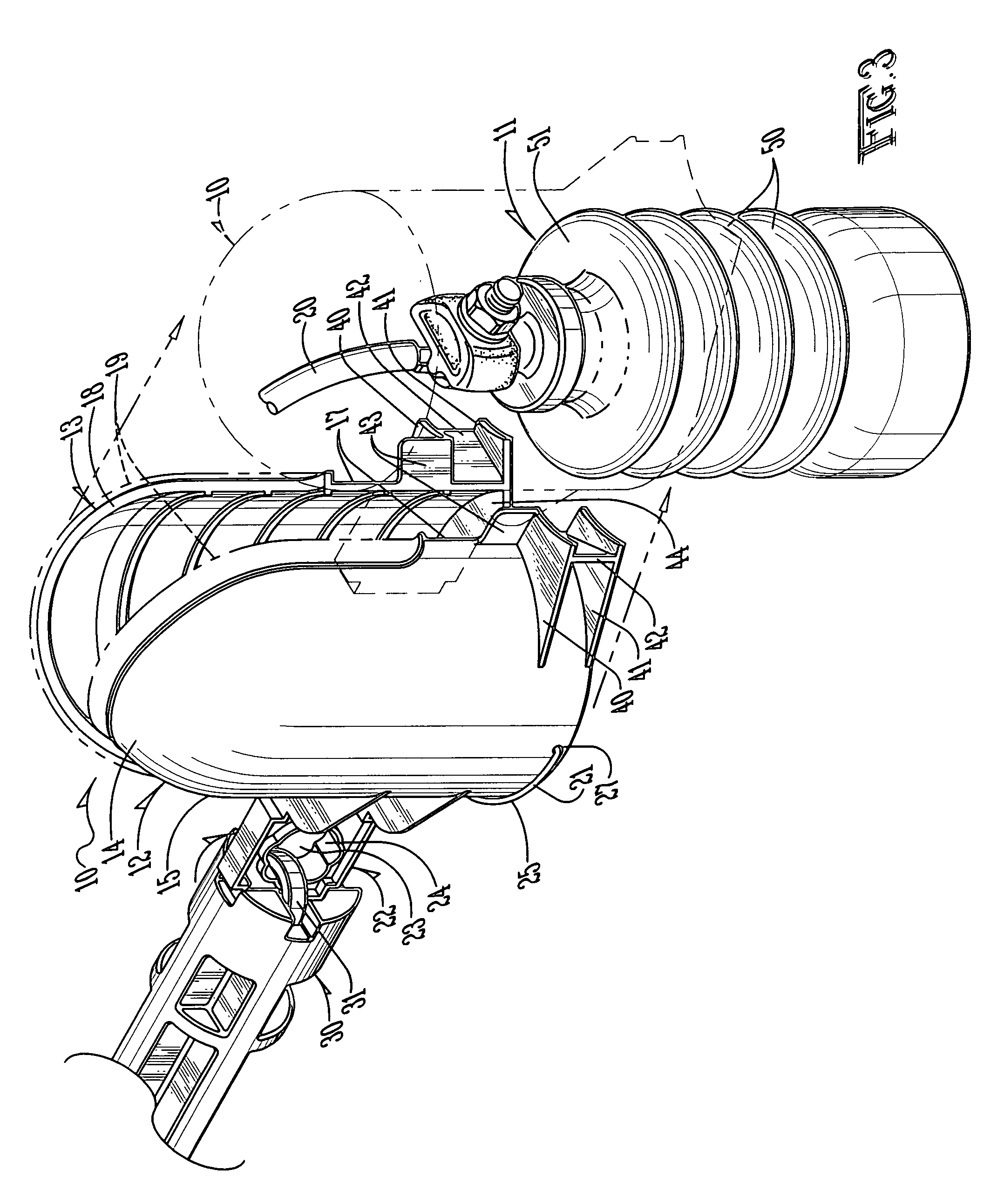Insulator bushing wildlife guard
- Summary
- Abstract
- Description
- Claims
- Application Information
AI Technical Summary
Benefits of technology
Problems solved by technology
Method used
Image
Examples
Embodiment Construction
[0039]With reference to attached FIGS. 1–6, the preferred embodiments of the present invention are described as follows. As shown in FIG. 1, the present invention is a wildlife guard 10 for protecting electrical equipment, such as an insulator bushing 11, from shorts caused by wildlife. The bushing 11 comprises a plurality of skirts 50. It is desirable to install the wildlife guard 10 on the topmost bushing skirt 51 in order to maximize its insulating and protective value. The wildlife guard 10 has features that allow it to be easily aligned and installed on the topmost skirt 51 of the insulator bushing 11.
[0040]As shown in FIG. 2, the wildlife guard 10 comprises two body sections 12, 13 of insulating material. The body sections 12, 13 are pivotally connected together along the back side 15 of each body section 12, 13 as shown in FIG. 4. The pivotal attachment may be by hinges 16 although the present invention is not limited to pivotal connection using hinges. Other forms of pivotal...
PUM
| Property | Measurement | Unit |
|---|---|---|
| Pressure | aaaaa | aaaaa |
| Angle | aaaaa | aaaaa |
| Flexibility | aaaaa | aaaaa |
Abstract
Description
Claims
Application Information
 Login to View More
Login to View More - R&D
- Intellectual Property
- Life Sciences
- Materials
- Tech Scout
- Unparalleled Data Quality
- Higher Quality Content
- 60% Fewer Hallucinations
Browse by: Latest US Patents, China's latest patents, Technical Efficacy Thesaurus, Application Domain, Technology Topic, Popular Technical Reports.
© 2025 PatSnap. All rights reserved.Legal|Privacy policy|Modern Slavery Act Transparency Statement|Sitemap|About US| Contact US: help@patsnap.com



